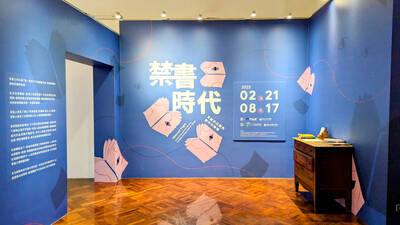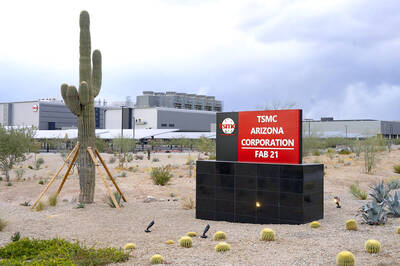This book begins with the spectacle of an author trawling through the past cultures of Europe, with occasional excursions elsewhere, to discover what constitutes civilization, and how its flourishing in different eras was related to the material prosperity or otherwise of the times.
A vast range of famous names is invoked, almost all being given the standard space of a page and a half or so. Why is he doing this? What’s the end in view, other than to reinstate the idea of civilization among otherwise often skeptical modern thinkers?
John Armstrong doesn’t only look at architecture, painting, music and poetry — he rather exasperatingly also includes elegant dinner parties in his net with, slightly less absurdly, the Japanese tea ceremony. Armstrong is in no sense an exclusionist — anything that’s charming, well-constructed or (in particular) infused with love is grist to his mill. This broad approach is both a strength and a weakness — and he appropriately enough has an interesting section on strengths and their concomitant weaknesses tucked away in a corner of his book.
Armstrong is in essence a philosophic popularizer. The range of great names quickly becomes a Wikipedia-like guide to a generous selection of cultural icons from the ancient Greeks to the present day, marshaled into significant sections, with almost every artist or cultural phenomenon receiving the benefaction of Armstrong’s wide-ranging approval.
But the contrary social situations his artists, and the phenomena they produced, sprang from appear to bewilder Armstrong, as if he’s conducting a disparate orchestra of incompatible instrumentalists with a school-masterly determination that they all can, should, and indeed must, play from the same score, and produce the same kind of optimistic-sounding music.
A man who opts for an all-inclusive stance like this is also going to go for the middle ground, which Armstrong predictably does. He cites Aristotle, with his concept of the golden mean, and at uncharacteristic length. But his caution also leads him to sit on the fence in several crucial ways. Is civilization dependent on material prosperity? Well, yes and no. Can we recreate the glories of the Italian Renaissance in modern conditions? He’s not sure, but thinks we should certainly try harder than we do. And so on.
The problem with this approach, and indeed with the book as a whole, is that what we now regard, quite rightly, as priceless cultural relics or supreme historical moments were actually the products of the most diverse conditions. What have the monasteries of Greece’s Mount Athos got in common with the paintings of Renaissance Italy? Nothing whatsoever. The temper that produced one was wholly in opposition to that which produced the other — a rejection of the pleasures of the flesh in the one case, an implicit glorification of them in the other. What has the Japanese tea ceremony got to do with the Athens of Pericles? Nothing at all is the obvious, and indeed the only, answer.
But Armstrong plugs away nonetheless. His uncertainly even extends into tentative references to his own life story. When he was young, his brother was living in Prague, drinking during the day and playing music in coffee shops in the evenings. He’d opted for freedom, thinks Armstrong, but he himself wasn’t so sure about that course. Now he’s Senior Advisor to the Vice-Chancellor of Melbourne University — the seemingly casual choices we make in youth have major repercussions in later life, it seems.
It’s tempting to damn this book with faint praise, to call it “well-intentioned,” displaying “broad sympathies” and so on. And it’s true that the most challenging books have had no truck with being all-inclusive and finding time for just about everyone and everything. They strike a bold line, and to hell with the consequences. Armstrong, by contrast, sees good in almost everyone involved with culture (the British artist Damien Hirst and a researcher at Florence’s Villa I Tatti looking into whether the camels in paintings of the Three Wise Men had crossed or uncrossed legs being two exceptions).
It’s only when you notice that one of this author’s jobs is Philosopher in Residence at the Melbourne Business School that you suddenly understand the motivation behind this book. What Armstrong wants to do is educate business executives of the future in the possibility of making money by engaging in activities that are culturally positive or socially beneficial, and preferably both.
It’s then, too, that you see the point of Armstrong’s endless boiling down of great moments in the history of culture into a few paragraphs — it’s basically so that his business students, with little time for such matters, can readily understand them.
Thus it is that he closes the book by citing the Roman writer Cicero. “Not an original thinker, he took seriously the idea that for philosophy to have an impact on life it had to be presented in a way that would engage with people who would never be scholars — but who would be generals, governors and senators.” This, with future businessmen rather than generals in his sights, is clearly John Armstrong thinks he too is doing.
One of his cultural heroes is especially significant. It’s the 12th-century Abbot Suger of St Denis, an administrator who saw that people could be persuaded to give money in return for the pleasure they got from the artistic monuments that resulted. He’s a clear precursor to the culturally-friendly businesspeople Armstrong is so anxious to help emerge.
“Could it really be that doing good could be profitable?” our author asks. That his answer to this question is a clear and unambiguous “Yes!” is at the heart of his position. And In Search of Civilization, an unoriginal but not uninteresting book, is, first and foremost, his means of promoting that belief beyond the confines of the Melbourne Business School.

On the final approach to Lanshan Workstation (嵐山工作站), logging trains crossed one last gully over a dramatic double bridge, taking the left line to enter the locomotive shed or the right line to continue straight through, heading deeper into the Central Mountains. Today, hikers have to scramble down a steep slope into this gully and pass underneath the rails, still hanging eerily in the air even after the bridge’s supports collapsed long ago. It is the final — but not the most dangerous — challenge of a tough two-day hike in. Back when logging was still underway, it was a quick,

From censoring “poisonous books” to banning “poisonous languages,” the Chinese Nationalist Party (KMT) tried hard to stamp out anything that might conflict with its agenda during its almost 40 years of martial law. To mark 228 Peace Memorial Day, which commemorates the anti-government uprising in 1947, which was violently suppressed, I visited two exhibitions detailing censorship in Taiwan: “Silenced Pages” (禁書時代) at the National 228 Memorial Museum and “Mandarin Monopoly?!” (請說國語) at the National Human Rights Museum. In both cases, the authorities framed their targets as “evils that would threaten social mores, national stability and their anti-communist cause, justifying their actions

In the run-up to World War II, Admiral Wilhelm Canaris, head of Abwehr, Nazi Germany’s military intelligence service, began to fear that Hitler would launch a war Germany could not win. Deeply disappointed by the sell-out of the Munich Agreement in 1938, Canaris conducted several clandestine operations that were aimed at getting the UK to wake up, invest in defense and actively support the nations Hitler planned to invade. For example, the “Dutch war scare” of January 1939 saw fake intelligence leaked to the British that suggested that Germany was planning to invade the Netherlands in February and acquire airfields

Taiwanese chip-making giant Taiwan Semiconductor Manufacturing Co (TSMC) plans to invest a whopping US$100 billion in the US, after US President Donald Trump threatened to slap tariffs on overseas-made chips. TSMC is the world’s biggest maker of the critical technology that has become the lifeblood of the global economy. This week’s announcement takes the total amount TSMC has pledged to invest in the US to US$165 billion, which the company says is the “largest single foreign direct investment in US history.” It follows Trump’s accusations that Taiwan stole the US chip industry and his threats to impose tariffs of up to 100 percent